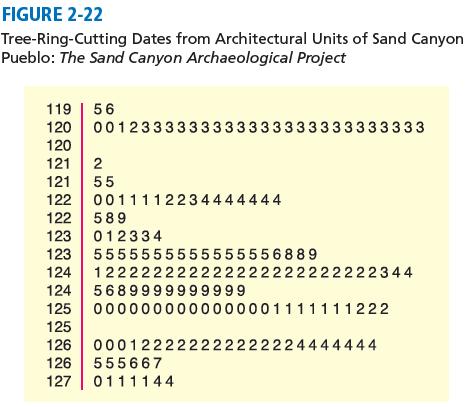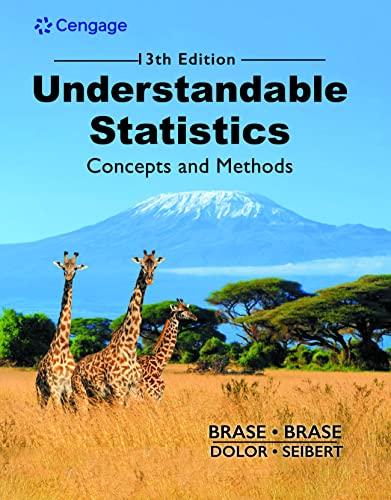Archaeology: Tree-Ring Data The Sand Canyon Archaeological Project, edited by W. D. Lipe and published by Crow
Question:
Archaeology: Tree-Ring Data The Sand Canyon Archaeological Project, edited by W. D. Lipe and published by Crow Canyon Archaeological Center, contains the stem-and-leaf diagram shown in Figure 2-22. The study uses tree rings to accurately determine the year in which a tree was cut. The figure gives the tree-ring-cutting dates for samples of timbers found in the architectural units at Sand Canyon Pueblo. The text referring to the figure says, “The three-digit numbers in the left column represent centuries and decades a.d.
The numbers to the right represent individual years, with each number derived from an individual sample.
Thus, 124 | 2 2 2 represents three samples dated to a.d. 1242.” Use Figure 2-22 and the verbal description to answer the following questions.
(a) Which decade contained the most samples?
(b) How many samples had a tree-ring-cutting date between 1200 a.d. and 1239 a.d., inclusive?
(c) What are the dates of the longest interval during which no tree-cutting samples occurred? What might this indicate about new construction or renovation of the pueblo structures during this period?AppendixLO1
Step by Step Answer:

Understandable Statistics Concepts And Methods
ISBN: 9780357719176
13th Edition
Authors: Charles Henry Brase, Corrinne Pellillo Brase






